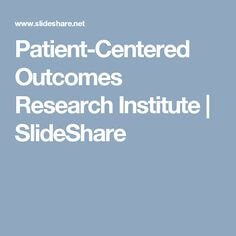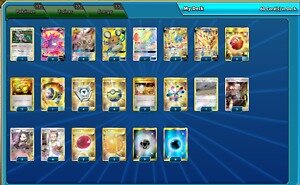Manufacturing business owners benefit tremendously from a working knowledge of basic cost accounting concepts. Now that you have a primer, explore our other cost accounting content, such as differentiating product and period costs. Instead of using just one measure to allocate overhead to your products, you choose the most impactful cost driver to distribute each type of overhead cost. You can calculate the batch’s direct labor costs by looking at how many hours your employees spent converting the potatoes to chips. Multiply the number of hours spent per batch by the employees’ hourly pay.

In contrast, long-term production activities usually require companies to also include indirect costs like overhead. As opposed to fixed costs, variable costs will increase as the level of production increases. In the early nineteenth century, these costs were of little importance to most businesses. Managers must understand fixed costs in order to make decisions about products and pricing. Since cost-accounting methods are developed by and tailored to a specific firm, they are highly customizable and adaptable.
Employee Costs
Thus, in the above income statement, the variable costs are 60% (100% – 40%) of sales, or $648,000 ($1,080,000 X 60%). The total contribution margin $432,000, can also be computed directly by multiplying the sales by the contribution margin ratio ($1,080,000 X 40%). If the variance analysis determines that actual costs are higher than expected, the variance is unfavorable. If it determines the actual costs are lower than expected, the variance is favorable. Job costing records direct labor and direct material costs by individual order.
It is especially useful for understanding which segments of a business are profitable, and which require improvement. As opposed to financial accounting, cost accounting is primarily intended for internal operational activities. Marginal costing (sometimes called cost-volume-profit analysis) is the impact on the cost of a product by adding one additional unit into production. Marginal costing can help management identify the impact of varying levels of costs and volume on operating profit.
Efficiency variance
These cost accounting basics form the fundamental tasks of the cost accountant in supporting the decision making of the management team. From their analysis, they should be able to tell which products and departments are most profitable as well as recommend changes to procedures that will improve the company’s cash flow. Cost accountants use accounting software and ERP software to carry out their tasks and roles.
- These estimates are informed by either the past experience of the company or market research conducted by management.
- Life cycle costing is the total cost of product ownership from inception to completion.
- Cost accounting is also used to compile asset costs and expenses that are to be reported in the financial statements.
Cost accounting gives the specificity about your costs that only a manager would care about. Cost accounting techniques inform inventory and cost of goods sold balances in your accounting software. Determining the actual cost to manufacture a product isn’t always a straightforward process. You use cost accounting to investigate the true cost of manufactured goods.
One-time costs like machinery purchase and periodic costs like rent are not included as direct costs. A company can use the resulting activity cost data to determine where to focus its operational improvements. For example, a job-based manufacturer may find that a high percentage of its workers are spending their time trying to figure out a hastily written customer order. Via (ABC) Activity-based costing, the accountants now have a currency amount pegged to the activity of “Researching Customer Work Order Specifications”. Senior management can now decide how much focus or money to budget for resolving this process deficiency.
What is the main difference between cost accounting and financial accounting?
Medicine A is produced at a high volume through a mostly automated process that only consists of putting chemicals into processing equipment and waiting for the final product. Controllable costs are expenses managers have control over and have the power to increase or decrease. Controllable costs are considered when the decision of taking on the cost is made by one individual. Common examples of controllable costs are office supplies, advertising expenses, employee bonuses, and charitable donations. Controllable costs are categorized as short-term costs as they can be adjusted quickly. This insights and his love for researching SaaS products enables him to provide in-depth, fact-based software reviews to enable software buyers make better decisions.

Cost accounting falls under the managerial accounting umbrella, which is all about using financial metrics to make business decisions. But cost accounting provides the data and the correct information of the actual cost. Cost accounting comparison of Actual cost with Standard cost and find out the problems. It supplies them all necessary and relevant data to the managers periodically that may be monthly, quarterly or half-yearly. Managers analyze the detailed cost information supplied by cost accounting and accordingly take decisions.
Accounting cost definition
It supplies all detailed information concerned with production cost to managers so that important decision regarding controlling costs can be taken. The information collected by cost accounting is not available for external users but is only used by internal users for management purposes. Operating costs are day-to-day expenses, but are classified separately from indirect costs – i.e., costs tied to actual production.
Jerry Wyant Named 2023 North Carolina Farmer of the Year – Morning Ag Clips –
Jerry Wyant Named 2023 North Carolina Farmer of the Year.
Posted: Tue, 01 Aug 2023 15:58:50 GMT [source]
It focuses on economies of scale and the additional cost of each new unit of production. This method aims to work out the cost of each unit of output and how various types of costs contribute to the total cost of the unit. It is used by companies who have a standard cost for each unit produced e.g brick manufacturers. Financial and do you know the pulse of your team systems can be differentiated based on their target audiences. Financial accounting is designed to help those who don’t have access to inside business information, such as shareholders, lenders, and regulators.
For example, retail investors who analyze financial statements benefit from a company’s financial accounting. The main goal of lean accounting is to improve financial management practices within an organization. Lean accounting is an extension of the philosophy of lean manufacturing and production, which has the stated intention of minimizing waste while optimizing productivity. For example, if an accounting department is able to cut down on wasted time, employees can focus that saved time more productively on value-added tasks.
- Throughput cost accounting aims to improve an organization’s efficiency by removing bottlenecks (production limitations) in the production process to maximize throughput.
- Cost Accounting is a branch of accounting concerned with recording and analyzing the cost elements of the organization.
- What’s different about throughput is that it does not concentrate on reducing expenses, it focuses on constraints, regardless of whether they are internal or external.
When you create your next budget, costs can be tracked and estimated in a way that helps maximize the business’s profit. Any unavoidable added costs that are not in the value stream are regarded as business sustaining costs. Under lean accounting, potential areas of waste can be divided into eight. It is instead measured in terms of how much time customer satisfaction takes and the level of customer satisfaction. Life cycle cost accounting (LCCA) is an accounting technique that calculates the total cost to be incurred over the whole life of an asset.
An accounting cost is recorded in the ledgers of a business, so the cost appears in an entity’s financial statements. If an accounting cost has not yet been consumed and is equal to or greater than the capitalization limit of a business, the cost is recorded in the balance sheet. If an accounting cost has been consumed, the cost is recorded in the income statement. If cash has been expended in association with an accounting cost, the related cash outflow appears in the statement of cash flows. A dividend has no accounting cost, since it is a distribution of earnings to investors. Where financial accounting remains fixated on the past, cost accounting standards tend to look ahead.
AccountingTools
Lean accounting is designed to streamline accounting processes to maximize productivity and quality. It eliminates unnecessary transactions and systems, reducing time, costs and waste. You can use it to understand what creates the most value for your customers and how you can continuously improve. Your direct labor and direct material costs — together called prime costs — total $350 per batch. In general, you’ll use a job costing system for unique products and services. Cost accounting takes a magnifying glass to your company’s processes, scrutinizing every expense to help management build a lean operation.
Marginal cost is defined simply as the cost of deciding to increase output by an additional unit. By calculating the marginal cost of an additional unit, managers can decide whether it is economically efficient to go ahead with the production. Cost accounting informs budgeting decisions, product/service pricing and business strategy. Indirect costs can’t be directly tied to the production of a product and might include the electricity for a factory.
Although cost accounting and financial accounting are prepared on similar principles, there exist differences between them. The accountant then can determine the total cost spent on each activity by summing up the percentage of each worker’s salary spent on that activity. The materials directly contributed to a product and those easily identifiable in the finished product are called direct materials. For example, paper in books, wood in furniture, plastic in a water tank, and leather in shoes are direct materials. Other, usually lower cost items or supporting material used in the production of in a finished product are called indirect materials.